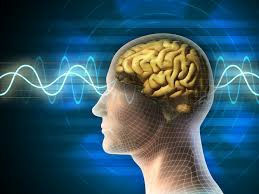SOME patients in a coma or vegetative state after brain injury show signs of “hidden consciousness” that may predict their chances of getting better, a new study suggests.
In the study, the researchers used a special algorithm to analyze the brain waves of more than 100 patients who were unresponsive after brain injury. They found that, within several days of the injury, about 1 in 7 of these patients showed distinct patterns of brain activity in response to commands to move their hands. This brain activity suggested that the patients understood the commands, but couldn’t perform the movements, the authors said.
“This study shows that some patients who are unresponsive for days or longer may have cognitive processing capabilities sufficient to distinguish commands, and those patients have a higher chance of recovering,” lead study author Dr. Jan Claassen, an associate professor of neurology at Columbia University Vagelos College of Physicians and Surgeons, said in a statement.
Larger studies will be needed to confirm the results and further develop the algorithm. But the method might one day help doctors better predict which brain injury patients are most likely to emerge from a coma or vegetative state and live somewhat independently, the authors said.
Doctors have trouble predicting which people will recover after a brain injury puts someone into a vegetative state or coma. They use neurological examinations and other tests to estimate a patient’s likelihood of recovering in the days and weeks after their injury, but these predictions are frequently inaccurate, the authors said.
Still, for more than a decade, scientists have known that some unresponsive patients with brain injuries show signs of hidden consciousness on an MRI or electroencephalogram (EEG), the latter of which is a test to measure brain waves. But research couldn’t say how often patients showed these signs, and whether they could predict who would recover.
In the new study, the researchers used EEG to analyze the brain waves of 104 patients who had experienced a sudden brain injury due to brain bleeding, trauma or oxygen deprivation. The patients were unable to talk and did not respond to spoken commands.
While the patients’ brain waves were monitored, they were asked to either “keep opening and closing” their hands or “stop opening and closing” their hands.
A machine-learning algorithm then analyzed the EEG data to determine whether the brain registered a difference between these two commands. In other words, if the patients consistently showed different brain wave patterns when they were given one command versus the other, the researchers interpreted that as a sign of hidden consciousness.










